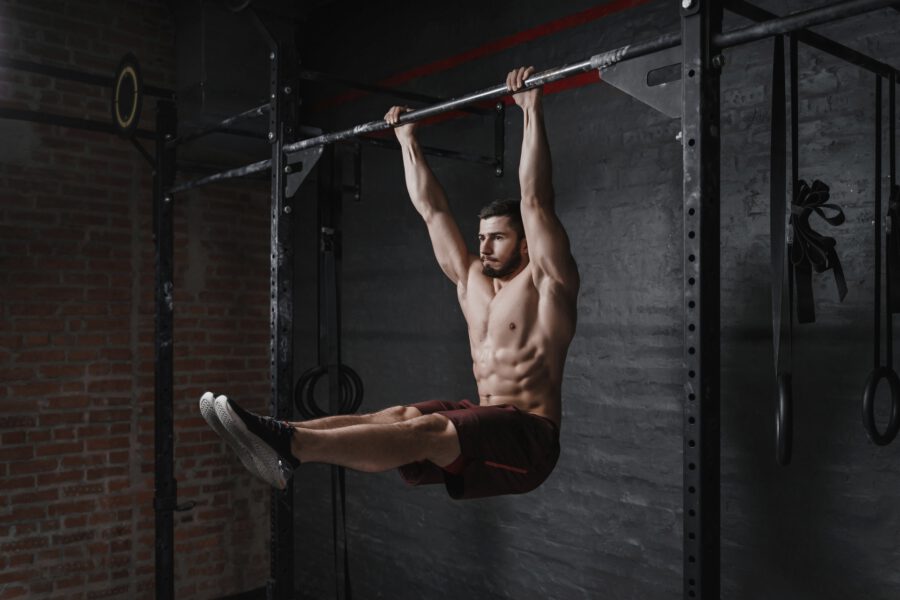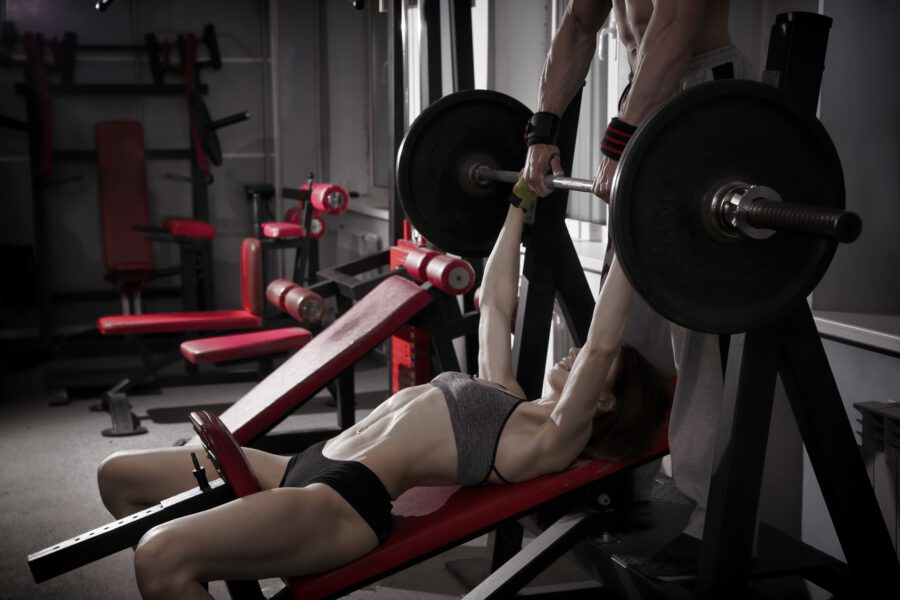Calisthenics vs Weight Lifting: Which is Best for Muscle Gains?
Fitness is dynamic. Whether your goal is to optimize your health, gain more muscles, or build your dream physique, there’s more than one way to achieve it. You just have to choose a path and enjoy the journey.
When it comes to packing lean muscle and building an athletic physique, two strength training methods stand out among fitness enthusiasts — calisthenics and weight lifting.
Both techniques undoubtedly result in significant muscle gains and have helped millions of people achieve their fitness goals. But that being said, which is better for building muscles? Calisthenics or weight lifting?
This article will discuss the science of strength training and identify both the benefits and disadvantages of calisthenics and weight lifting.
Ever wondered why lifting weights or doing bodyweight workouts makes muscles bigger over time?
When we perform strength training, small tears occur within our muscle fibers. These necessary tears trigger our cells and hormones to start a muscle-healing response to make the damaged fibers grow back together.
As we keep training and progress over weeks and months, more tearing leads to more repair. Our bodies adapt by enlarging the muscles and packing more protein into the fibers to overcome the challenges you put on it.
Over time, this makes our muscles bigger and able to handle more weight or exercise challenges over time.
Here are the keys to growing your muscles:
- Consistent strength training
- Gradually progress and make your exercises more challenging
- Add more protein to your diet
- Eat a balanced diet with proper nutrition and macros
- Sufficient rest and recovery
Remember: If you want to build more muscles consistently, stay consistent with your strength training through calisthenics, weight lifting, or both.
Calisthenics or bodyweight exercise is a form of strength training that uses your own bodyweight as resistance instead of machines, free weights, or other equipment.
This training method has been around for centuries, dating back to ancient Greece. In modern times, calisthenics serves as a well-rounded training method that improves functional strength and fitness that you can apply in your daily life at minimal cost with almost zero equipment needed.
Common calisthenic exercises:
More accessible
Calisthenics requires no gym membership or equipment. Bodyweight workouts can be performed anywhere at no cost. Just find a space in your home or at your local park, and you can have nice calisthenic workout sessions.
Calisthenics can also be movement snacks or a home workout routine if you have a busy schedule and try to balance life and your fitness.
Calisthenic workouts use compound body movements. It uses more than one muscle group for each exercise, allowing you to target and challenge major upper and lower body muscle groups in one workout session.
Essentially, calisthenics allows you to build a more holistic strength and a more complete approach to fitness since many of the movements in calisthenic exercises translate to real-world functional movements.
Calisthenics is generally low impact and has lower injury risks than heavy-weight training. Since you are using your own body weight as resistance, the compression on the joints and tissues is more controlled. In addition, the lack of heavy external loads during exercises lowers the risk of accidents and joint injuries.
Anyone can do calisthenics regardless of their fitness level, making it a great training routine for beginners or people just getting into fitness.
Each movement, like pushups or bodyweight squats, offers easier beginner progressions as well as extremely challenging advanced variations. This provides an infinite room for growth and just the right amount of challenge, depending on your strength and fitness level.
Since it utilizes more than one muscle group, calisthenic workouts tend to burn more calories. These movements require more energy, allowing you to lose more fat and weight in the process.
In addition, calisthenics is also designed to be incorporated with vigorous workouts such as circuit training or high-intensity interval training (HIIT). Overall, this adds more potential for bodyweight exercises to burn more calories.
Calisthenics enhances balance, proprioception (sense of self-movement), and overall body control. Mastering skills like the planche or handstand requires exceptional intermuscular coordination.
Performing moves on parallel bars or rings further challenges muscles required for stabilization to cue positional corrections. Practicing advanced maneuvers strengthens muscles that support joints by providing feedback. This refined mind-muscle connection gives calisthenics athletes heightened body awareness and precision of movement.
May limit muscle growth potential
While advanced calisthenics can build impressive muscle size and strength, the lighter resistance from bodyweight exercises may constrain hypertrophy potential compared to progressive overload with weight lifting.
In addition, advanced calisthenic practitioners may find it harder to achieve muscle failure and further challenge themselves. A good solution to this is to use external weights such as weighted vests, resistance bands, and advanced moves like planche push-ups to provide more challenge to the muscles.
Calisthenics workout fails to isolate specific muscles such as your delts and biceps during training. Unfortunately, some muscles need more attention and be targeted to grow and develop.
An optimized weight-training regimen could be more appropriate if you need to correct a muscle imbalance or train lagging muscles.
Mastering advanced calisthenics skills like muscle-ups, levers, and planches requires exceptional dedication through months and years of consistent practice. These multi-joint movements simultaneously demand coordinating mobility, flexibility, balance, and grip strength.
Skills like the human flag or one-arm pull-up have extremely steep strength-to-weight ratios to conquer. Unlike steadily adding weight each session, technique and nervous system adaptation must catch up to strength.
Here’s how you can progress your calisthenics workouts depending on your strength level:
| Beginner | Intermediate | Advanced |
| Pushup | ||
|
|
|
| Pull up | ||
|
|
|
| Squat | ||
|
|
|
Try this calisthenics workout routine for women:
And for men:
Weight training involves strength exercises using external resistance to build muscle and improve physical capability. This external loading typically comes from free weights like barbells and dumbbells, weight machines, or sometimes bodyweight movements.
Faster muscle growth
Strength training with weights is more effective for rapid muscle building. The reason comes down to load potential. Lifting free weights like dumbbells, kettlebells, or barbells enables incremental progress by simply adding weight each session once the current load no longer challenges the muscle.
A barbell has no inherent maximum - one can continue loading on plates and progressing into multiple hundreds of pounds lifted. This steady overload curve constantly places new levels of mechanical tension on muscles to elicit growth.
Weight training builds strength faster than calisthenics. Lifting bars and dumbbells means you can keep adding heavier weight each workout. This constant increase in resistance provides necessary and consistent stimulus to ensure strength gain and build more muscles effectively.
Weightlifting exercises such as deadlifts and squats provide significant anabolic hormonal responses from the body and are known to elevate key hormones for muscle growth, such as testosterone and human growth hormones.
May reduce mobility
Machines and bars may reinforce repetitive motions that lack the flexibility required outside the gym. Without proper workout programs, weight lifting can lead to muscle imbalance and poor movement patterns that can strain the tendons and joints.
Weight lifting builds strength in frontal planes - squatting, deadlifting, and pressing involve linear motion patterns. Lacking lateral, rotational, and countermovement exercises creates an imbalance. This neglects the stability and coordination needed for injury resilience and real-life function.
While it is true that training in the gym and lifting weights to build muscles is easier and more convenient, it isn’t the only way to do it. Calisthenics and ensuring proper training progression can also lead to similar results.
These two training methods have their own benefits and disadvantages. For example, no amount of push-ups can translate to bench pressing heavy weights and vice versa. These exercises require and train different skills and movement patterns.
The problem stems not from the type of lifting itself - but from overly rigid programs fixated just on adding weight or ignoring the benefits of other fitness training.
Blending modalities like weights for progressive overload and calisthenics for functional athleticism mitigate each method's weaknesses. This best develops usable, lifelong strength and fitness through getting the best of both worlds.
So if you regularly train at the gym, try adding 1-2 bodyweight exercises per workout to get some of the calisthenics benefits.
And if you spend hours lifting your own body weight, try adding a gym workout once in a while or a few movements with kettlebells and resistance bands to get even stronger.
Here’s a workout program for men you should do:
And for women:
Both calisthenics and weight training build muscle and strength effectively. However, they work differently. Weight lifting uses heavy external resistance to rapidly overload muscles. This allows faster size and strength gains.
Calisthenics, on the other hand, uses your own body weight as resistance to achieve muscle growth and develop strength, which can take more time.
In fitness, there’s no one-size-fits-all method. The key is approaching your fitness journey without judgment and using everything that can add value to you as you see fit.

